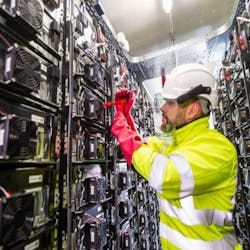A new training and certification program in California equips electricians with the skills needed to work with microgrids and storage, while aiming to ensure minority and disadvantaged residents benefit from the program.
As part of the effort to train workers for jobs that address climate change, the California Workforce Development Board has provided a $1.25 million grant for training and certification through a new nonprofit, Energy Storage and Microgrid Training and Certification (ESAMTAC).
The larger, $25.6 million effort, which includes additional climate mitigation projects, has a goal of ensuring equity in climate related jobs, said Aida Cardenas, deputy director of equity climate jobs under the California Workforce Development Board. Funded by the state’s Greenhouse Gas Reduction Fund — money generated by California’s cap-and-trade legislation — the other grants in the project provide funding for public utilities, healthcare, water, public service and electric bus manufacturing, among others.
“The goal is to achieve equity climate mitigation and job quality,” she said. “Equity is about access to quality jobs. But we’re also looking at communities with barriers and creating better jobs through workforce training,” Cardenas added.
In the energy storage and microgrid project, the focus is on training electricians about storage and microgrid technologies, which many have not been trained to work with. About 95% of the work needed to work with these technologies is performed by electricians, said Bernie Kotlier, executive director of the California and Nevada Labor Management Cooperation Committee. The committee is a partnership among employers, including the National Electrical Contractors Association and the International Brotherhood of Electrical Workers. The two organizations have about 20 joint apprenticeship and training centers for electricians.
“This grant support is critical to producing hundreds or thousands of electricians who can do this work safely and effectively,” said Kotlier. He estimated that 300 to 400 people annually will take part in the program for the next few years.
One of the issues the grant aims to address is the safety of lithium ion batteries in energy storage, he said. “Energy storage is not your typical electrical work. It adds a new dimension to electrical work.” Lithium ion batteries have a history of and reputation for thermal runaway and other challenges. That means consumers and businesses can be hesitant to install storage.
“We want to give people confidence they should be using storage devices. To do that, we have to make sure the installation, commissioning, repairing and decommissioning is done safely.” Average electricians aren’t familiar with the two technologies, Kotlier said.
ESAMTAC offers a course that teaches electricians and apprentices how to understand the dangers of lithium ion and other batteries, and to safely install and maintain them.
“When we do this, the public becomes much safer, including residents at home, office inhabitants and people who live near large utility systems,” he said.
With more focus on electrification to fight climate change, new technologies are constantly being introduced to the marketplace, and many are electrically based. It’s a challenge for apprentices and electricians to stay informed about what’s needed to work with these technologies. “Universities and schools are all faced with the challenge of keeping up with the technology,” he said.
To meet the equity goal of the grant program, the non-profit reaches out to colleges, disadvantaged communities, veterans and former inmates, said Kotlier.
Microgrid developers in California can take advantage of the work that’s being done through the grant by hiring contractors whose electricians have been certified by ESAMTAC. Creating a list of certified contractors is one of the goals of the program.
“ESAMTAC is just getting going. We don’t have a critical mass right now. So contractors can’t hire as many trained electricians as they’d like.” But with the support of the workforce board, they will soon be able to find contractors, through the ESAMTAC website, who employ electricians with this kind of training.
The ESAMTAC program is part of the High Road Training Partnerships program, which aims to create a “high road” economy that focuses on jobs that help families experiencing poverty.
The grants are for 11 projects in a diverse group of industries that help California address climate change. The industries include logistics, public transport, water utilities, electric utilities, healthcare, food production, agriculture, janitorial, and electric bus manufacturing.
This is the first round of High Road grants that are part of the California Climate Investments, funded by the Greenhouse Gas Reduction Fund.
For the microgrid and energy storage project, building confidence in the technologies is an important goal that has far-reaching implications.
“The project is critical to bolstering confidence and risk reduction, which applies to banks, insurance companies, government funding and all kinds of risk averse institutions that don’t want to see public support for these technologies wane,” said Kotlier.








